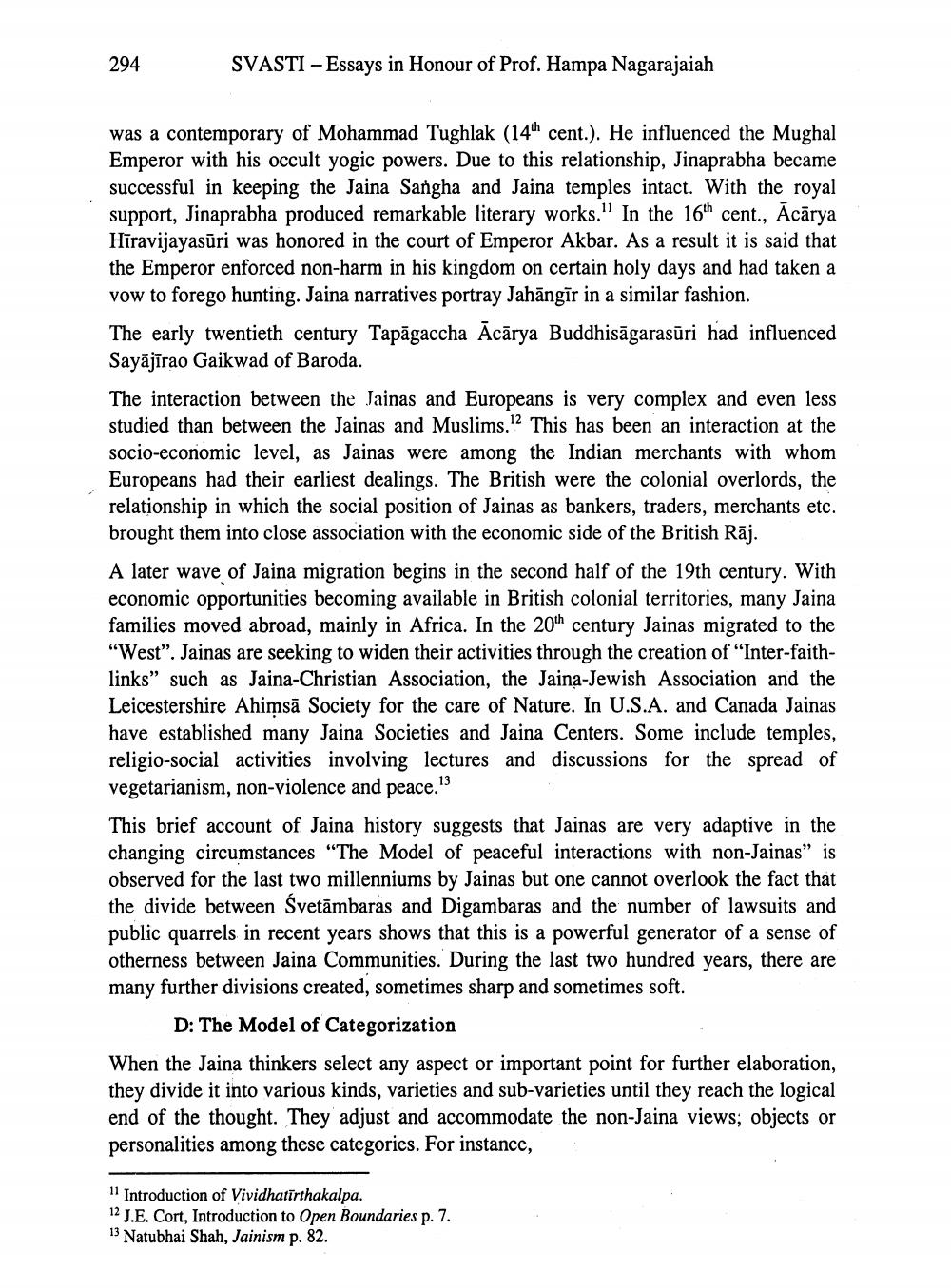________________
294
SVASTI -Essays in Honour of Prof. Hampa Nagarajaiah
was a contemporary of Mohammad Tughlak (14th cent.). He influenced the Mughal Emperor with his occult yogic powers. Due to this relationship, Jinaprabha became successful in keeping the Jaina Sangha and Jaina temples intact. With the royal support, Jinaprabha produced remarkable literary works." In the 16th cent., Acārya Hīravijayasūri was honored in the court of Emperor Akbar. As a result it is said that the Emperor enforced non-harm in his kingdom on certain holy days and had taken a vow to forego hunting. Jaina narratives portray Jahāngir in a similar fashion. The early twentieth century Tapāgaccha Ācārya Buddhisāgarasūri had influenced Sayājīrao Gaikwad of Baroda.
The interaction between the Jainas and Europeans is very complex and even less studied than between the Jainas and Muslims.!? This has been an interaction at the socio-economic level, as Jainas were among the Indian merchants with whom Europeans had their earliest dealings. The British were the colonial overlords, the relationship in which the social position of Jainas as bankers, traders, merchants etc. brought them into close association with the economic side of the British Rāj. A later wave of Jaina migration begins in the second half of the 19th century. With economic opportunities becoming available in British colonial territories, many Jaina families moved abroad, mainly in Africa. In the 20th century Jainas migrated to the "West". Jainas are seeking to widen their activities through the creation of "Inter-faithlinks" such as Jaina-Christian Association, the Jaina-Jewish Association and the Leicestershire Ahimsā Society for the care of Nature. In U.S.A. and Canada Jainas have established many Jaina Societies and Jaina Centers. Some include temples, religio-social activities involving lectures and discussions for the spread of vegetarianism, non-violence and peace."
This brief account of Jaina history suggests that Jainas are very adaptive in the changing circumstances "The Model of peaceful interactions with non-Jainas” is observed for the last two millenniums by Jainas but one cannot overlook the fact that the divide between Svetāmbaras and Digambaras and the number of lawsuits and public quarrels in recent years shows that this is a powerful generator of a sense of otherness between Jaina Communities. During the last two hundred years, there are many further divisions created, sometimes sharp and sometimes soft.
D: The Model of Categorization
When the Jaina thinkers select any aspect or important point for further elaboration, they divide it into various kinds, varieties and sub-varieties until they reach the logical end of the thought. They adjust and accommodate the non-Jaina views; objects or personalities among these categories. For instance,
11 Introduction of Vividhatirthakalpa. 12 J.E. Cort, Introduction to Open Boundaries p. 7. 13 Natubhai Shah, Jainism p. 82.




